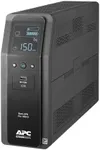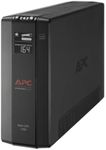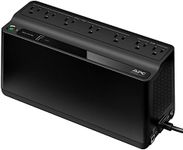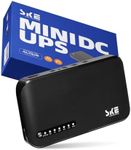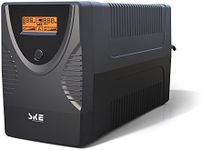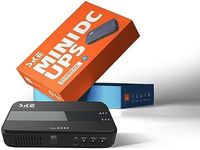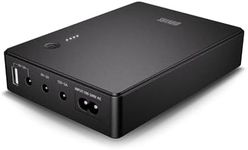Buying Guide for the Best Ups Units
When choosing a UPS (Uninterruptible Power Supply) unit, it's important to understand that this device will protect your electronic equipment from power interruptions, surges, and spikes. A UPS unit provides backup power to keep your devices running during short outages and allows you to safely shut them down during longer outages. To select the best UPS unit for your needs, you should consider several key specifications that will determine its suitability for your specific requirements.Power Capacity (VA/W)Power capacity, measured in Volt-Amps (VA) and Watts (W), indicates the maximum load a UPS can handle. This spec is crucial because it determines how many devices and how much power the UPS can support. To navigate this, calculate the total power consumption of the devices you plan to connect. For light usage (e.g., a single computer and monitor), a lower capacity (around 600-800 VA) may suffice. For multiple devices or more power-hungry equipment, look for higher capacities (1000 VA and above). Choose a UPS with a capacity that exceeds your total power needs to ensure reliable performance.
Battery RuntimeBattery runtime indicates how long the UPS can provide power to your devices during an outage. This is important for ensuring you have enough time to save your work and shut down devices properly. Short runtimes (5-10 minutes) are suitable for brief outages or quick shutdowns, while longer runtimes (20 minutes or more) are better for extended outages or if you need more time to complete tasks. Consider your typical power outage duration and how much time you need to safely manage your devices when choosing the right battery runtime.
Number of OutletsThe number of outlets on a UPS unit determines how many devices you can connect. This is important for ensuring all your critical devices are protected. Basic models may have 4-6 outlets, while more advanced units can have 8 or more. Assess the number of devices you need to protect and choose a UPS with enough outlets to accommodate them. Additionally, consider if you need a mix of battery-backed and surge-protected outlets for different types of devices.
Form FactorForm factor refers to the physical size and shape of the UPS unit. This is important for ensuring the unit fits in your available space. UPS units come in various forms, such as compact, tower, and rack-mounted. Compact and tower units are suitable for home or small office use, where space may be limited. Rack-mounted units are designed for server rooms or data centers. Choose a form factor that fits your space and installation requirements.
Waveform TypeWaveform type refers to the shape of the electrical output provided by the UPS. This is important for compatibility with your devices. There are two main types: simulated sine wave and pure sine wave. Simulated sine wave units are generally more affordable and suitable for basic electronics like computers and monitors. Pure sine wave units provide cleaner power and are better for sensitive or high-end equipment, such as servers and medical devices. Choose the waveform type based on the sensitivity and requirements of your connected devices.
Additional FeaturesAdditional features can enhance the functionality and convenience of a UPS unit. These may include LCD displays for monitoring status, USB ports for charging devices, network management capabilities, and software for automatic shutdown. These features are important for improving user experience and managing power more effectively. Consider which additional features are important for your use case and choose a UPS that offers those benefits.

